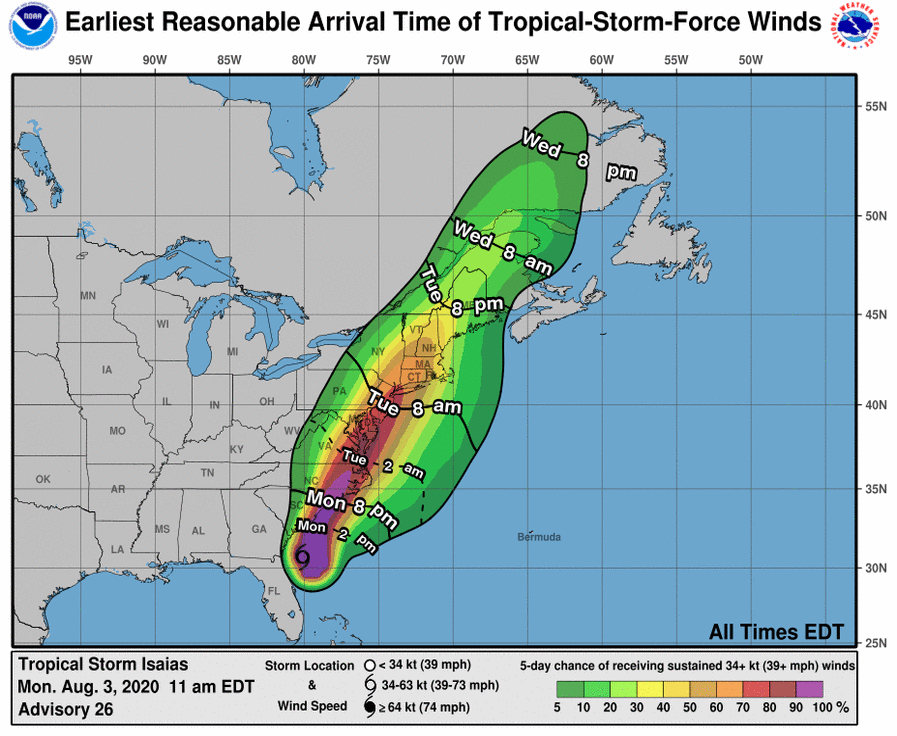
Section Branding
Header Content
Coastal Georgia Braces For Flooding As Isaias Passes
Primary Content

The worst of Tropical Storm Isaias storm was expected to bypass Georgia Monday on its way to the Carolinas, but the area is still getting ready for dangerous storm surge and surf, rainfall and heavy winds. Flooding is likely, especially in flood-prone low-lying areas.
The Coastal Health District has suspended coronavirus testing for the day because of the storm. Infection rates in the coastal region have been increasing sharply over the last month and surpassed 10,000 cases Sunday.
Meanwhile, the operation to remove a capsized cargo ship from the St. Simons Sound has paused while cranes and other equipment are secured due to the storm. Contractors and environmental groups have warned that a storm increases the risk of more oil leaking from the Golden Ray, a cargo ship transporting 4,200 cars that ran aground nearly a year ago.
At the ports of Savannah and Brunswick, the Coast Guard has ordered operations suspended and told ships over 300 tons to leave before the storm.
The beaches on Tybee Island closed to swimming Monday as well, because the storm is expected to produce dangerous surf and rip currents.
"Lifeguards will be flying double red flags. The water is closed to the public at this time," a Facebook message posted on the "Tybee Lifeguards" page said.
Fort Pulaski National Monument, which sits on a low-lying island near the mouth of the Savannah River and has taken serious damage from hurricane storm surge flooding in recent years, also closed its trails to the public. The indoor areas, including the fort itself and the visitor center, are already closed due to COVID-19.
At a virtual conference last week, emergency managers in the region acknowledged that the pandemic is complicating many aspects of hurricane planning this season, especially preparations for evacuation, sheltering and food distribution.
The Georgia coast has been evacuated for hurricanes or tropical storms three times in the last five years.
Hurricane season typically gets more active in September and October.

